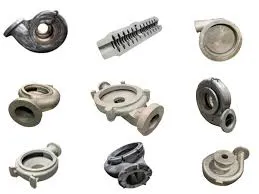Mobile:+86-311-808-126-83
Email:info@ydcastings.com
ported turbine housing
The Evolution and Importance of Ported Turbine Housing in Automotive Performance
In the world of automotive performance, the components of an engine can make or break the overall power and efficiency of the vehicle. One such critical component is the turbine housing, particularly when it comes to turbocharged engines. The concept of ported turbine housing has gained significant traction among automotive enthusiasts and engineers alike, becoming a focal point in enhancing turbo performance and achieving higher output. This article delves into the significance, advantages, and considerations associated with ported turbine housing.
Understanding Turbine Housing
Turbine housing is essentially the enclosure that contains the turbine wheel of a turbocharger. It is critical in guiding exhaust gases from the engine into the turbine wheel, which in turn, helps spool up the turbocharger to force more air into the engine's intake. The design and configuration of the turbine housing directly influence the turbocharger's efficiency and performance characteristics.
What is Ported Turbine Housing?
Ported turbine housing refers to a modification where additional material is removed from the housing to enhance airflow and reduce pressure buildup. The process usually involves machining the interior of the turbine housing to create larger or smoother pathways for exhaust gases. This modification is particularly prevalent in high-performance applications where maximizing turbo efficiency is paramount.
Advantages of Ported Turbine Housing
1. Reduced Turbo Lag One of the primary benefits of porting the turbine housing is the reduction in turbo lag. By improving the flow of exhaust gases, the turbocharger can spool up more quickly, allowing for a more immediate power delivery. This is particularly important in racing scenarios where quick power response can make a significant difference in performance.
2. Enhanced Power Output A ported turbine housing can facilitate a more efficient exhaust flow, which translates to improved performance. With less restriction in the exhaust path, the turbocharger can produce more boost, thereby increasing the engine's overall horsepower. This is crucial for street and race applications where every ounce of power counts.
ported turbine housing

3. Improved Thermal Management By allowing exhaust gases to flow more freely, ported turbine housing can help lower engine temperatures. Cooler exhaust gases lead to less heat buildup, which can improve the durability and longevity of engine components, especially under high-stress conditions.
4. Tuning Flexibility Ported turbine housings can offer more tuning options for automotive enthusiasts. Because the improved airflow characteristics allow for greater adjustments to boost levels and fuel mapping, drivers can fine-tune their setups for optimal performance based on specific driving conditions or preferences.
Considerations When Utilizing Ported Turbine Housing
While ported turbine housing has many advantages, there are also some considerations to keep in mind. Firstly, the modification process can be complex and may require experienced hands to ensure proper execution. Improper porting can lead to detrimental results, such as increased turbulence or backpressure.
Additionally, it is essential to consider the overall design of the turbocharger and other engine components. A ported turbine housing may yield the best results when paired with other performance modifications, including upgraded intercoolers, custom exhaust systems, and remapped engine management systems. Without an integrated approach, performance gains may be limited.
Finally, enthusiasts should monitor the impacts of porting on emissions. Depending on local regulations, modifications that enhance performance may also affect a vehicle's emissions performance, potentially leading to legal issues.
Conclusion
Ported turbine housing represents a significant advancement in optimizing turbocharged engine performance. By enhancing exhaust flow and reducing lag, it can play a pivotal role in the racing and automotive performance arenas. While the benefits are clear, careful consideration must be given to the modification process, compatibility with other engine components, and regulatory compliance. As the automotive industry continues to evolve, the push for efficiency and performance guarantees that modifications like ported turbine housing will remain a topic of interest for enthusiasts and engineers alike. In the quest for speed, every detail counts—from the ground up to the skies above, where turbocharged dreams take flight.
-
Why Should You Invest in Superior Pump Castings for Your Equipment?NewsJun.09,2025
-
Unlock Performance Potential with Stainless Impellers and Aluminum End CapsNewsJun.09,2025
-
Revolutionize Your Machinery with Superior Cast Iron and Aluminum ComponentsNewsJun.09,2025
-
Revolutionize Fluid Dynamics with Premium Pump ComponentsNewsJun.09,2025
-
Optimizing Industrial Systems with Essential Valve ComponentsNewsJun.09,2025
-
Elevate Grid Efficiency with High-Precision Power CastingsNewsJun.09,2025











